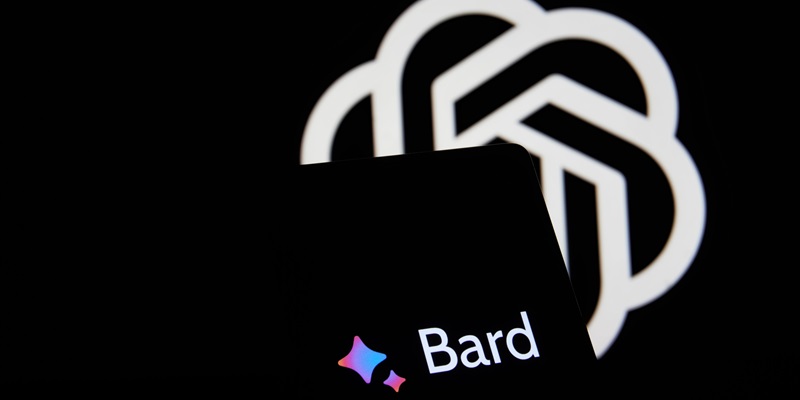In the rapidly expanding field of artificial intelligence, language models have gained significant attention due to their capacity to generate human-like text. ChatGPT and Google Bard are two popular AI language models that excel in different aspects of text generation. Understanding their capabilities and limitations is crucial for deciding which model best suits your specific requirements.
ChatGPT Overview
ChatGPT, developed by OpenAI, is a highly advanced deep learning-based model. It leverages an extensive dataset of internet text to generate coherent and contextually relevant responses. Through its training, ChatGPT has gained a comprehensive understanding of human language.
Strength in Understanding and Mimicking Human Language
One of ChatGPT’s most significant strengths is its ability to understand and effectively mimic human language. Through analyzing vast amounts of diverse text, it has learned to generate responses that align with the tone, style, and nuances of human conversation.
Relevance in Coherent and Contextually Relevant Conversations
Unlike many other language models, ChatGPT demonstrates remarkable proficiency in generating conversations that are both coherent and contextually relevant. Its advanced training enables it to handle complex prompts and provide detailed answers, making it an ideal choice for engaging and informative discussions.
Capacity to Handle Complex Prompts and Provide Detailed Answers
ChatGPT’s ability to handle complex prompts sets it apart from other language models. When presented with intricate questions or prompts, ChatGPT delivers detailed and comprehensive answers, showcasing its prowess in understanding and processing complex information.
AI Language Model Developed by Google Research
Google Bard, another AI language model, has been developed by Google Research. It has gained popularity for its unique specialization in producing poetic and creative responses.
The strength of Google Bard lies in its ability to generate beautiful and aesthetically pleasing text. Trained on a diverse range of texts including poetry, literature, and song lyrics, it has honed its skills in creating expressive and rhythmical language.
Training on Diverse Texts like Poetry, Literature, and Song Lyrics
Google Bard’s training on an assortment of texts gives it an edge in artistic endeavors. Whether it involves writing poems, crafting catchy phrases, or creative storytelling, Google Bard’s output possesses a distinct artistic flair.
Excellence in Generating Aesthetically Pleasing and Rhythmic Text
Google Bard excels in generating text that is not only creative but also aesthetically pleasing. Its knack for producing rhythmic and engaging content makes it a valuable tool for those seeking to infuse their writing with artistic qualities.
ChatGPT’s Prowess in Understanding Complex Prompts and Generating Coherent Conversations
ChatGPT excels in its unparalleled ability to understand and respond to complex prompts, making it the ideal choice for engaging in deep and informative conversations. Its strength lies in generating meaningful and contextually appropriate responses, establishing a coherent flow of dialogue.
Google Bard’s Strength in Generating Poetic and Creative Text
Conversely, Google Bard offers a unique advantage when it comes to creative writing projects. Its specialization in poetic and artistic text generation enables users to add a touch of elegance and creativity to their work.
ChatGPT for Conversations and Google Bard for Artistic Endeavors
Choosing between ChatGPT and Google Bard depends on your specific requirements. For those seeking coherent conversations and detailed answers, ChatGPT is the preferred choice. On the other hand, for artistic endeavors, creative writing, or the desire to craft catchy phrases, Google Bard stands out as an excellent option.
Challenges with Highly Technical or Specialized Prompts
While both models have been trained on a wide range of texts, highly technical or specialized prompts can pose a challenge. In such cases, the models might produce less accurate or nonsensical responses due to the lack of specific training in those areas.
Occasional Production of Incorrect or Nonsensical Responses
Another limitation of these language models is the occasional generation of incorrect or nonsensical responses. Despite their advanced training, these models are not infallible and may sometimes produce output that is less accurate or contextually irrelevant.
In the realm of AI language models, ChatGPT and Google Bard offer distinct capabilities to cater to different text generation requirements. ChatGPT’s strength lies in its capacity to generate coherent and contextually relevant conversations, making it ideal for engaging discussions. On the other hand, Google Bard excels in producing poetic and creative text, adding an artistic flair to a variety of writing projects. Carefully considering your specific needs will help you choose the model that best aligns with your desired outcome, leading to enhanced and efficient text generation.

